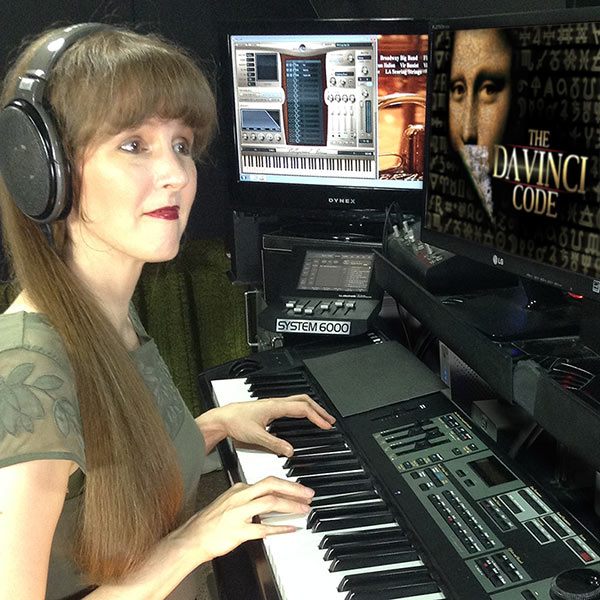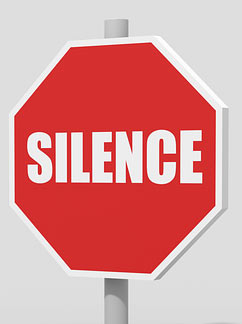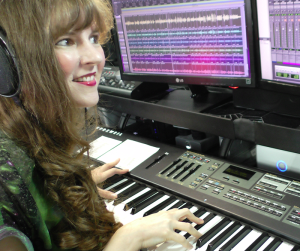Trending
Opinion: How will Project 2025 impact game developers?
The Heritage Foundation's manifesto for the possible next administration could do great harm to many, including large portions of the game development community.

Featured Blog | This community-written post highlights the best of what the game industry has to offer. Read more like it on the Game Developer Blogs or learn how to Submit Your Own Blog Post
The 5th of a 5-part series. Video game composer Winifred Phillips shares strategies from her GDC 2017 talk, Homefront to God of War: Using Music to Build Suspense. Part 5: Semi Silence, discussing the power of relative silences to increase game suspense.


By Winifred Phillips | Contact | Follow
Welcome to the fifth and final installment of my five-part article series on music composition techniques for stimulating tension and suspense in video games. These articles are based on the presentation I gave this year at the popular Game Developers Conference in San Francisco, entitled Homefront to God of War: Using Music to Build Suspense. If you haven't yet read the previous four articles, you'll find them here:
Now that we’ve considered the power of Ominous Ambiences, Jarring Jolts, Creepy Clusters, and Drones of Dread, let’s take a look at the last item on our list of suspenseful music composition techniques – Semi Silence.
 Complete silence is unnatural – there are almost no times in our lives in which we experience absolute silence. But relative silence can feel very powerful. It’s eerie. Unsettling.
Complete silence is unnatural – there are almost no times in our lives in which we experience absolute silence. But relative silence can feel very powerful. It’s eerie. Unsettling.
A thunderous noise followed by a relative silence can be one of the top producers of nervous anxiety, but the semi-silence technique can work even without a big sonic contrast preceding it.
If we’ve built up enough of an atmosphere of uncertainty and tension, injecting moments of silence into it can really add layers of intensity to the experience.
"Using silence or near-silence can often elicit a more emotional response from the player," writes sound designer George Spanos, the founder of the GameSoundDesign web site. "Because we are constantly bombarded with sensory information in the average first or third person shooter, silence can result in an incredibly powerful moment of clarity for the player."
Let's take a look at a couple of examples of this technique in action:

For The Da Vinci Code game (developed by Double Helix Games and based on the famous novel by Dan Brown), I composed a lot of video game music meant to build suspense. One of the tracks focused on waves of sound that crested, subsided, and then dipped into silence before building up again. Let’s take a look at an example of how that worked:
 Finally, let’s see how silence can create suspense in a cinematic. In my music for Homefront: The Revolution, I used silence as a way to best accentuate story moments – letting the music essentially stop dead to emphasize when something awesome or terrifying had happened. The silence creates a great big contrast that makes an impression on the player.
Finally, let’s see how silence can create suspense in a cinematic. In my music for Homefront: The Revolution, I used silence as a way to best accentuate story moments – letting the music essentially stop dead to emphasize when something awesome or terrifying had happened. The silence creates a great big contrast that makes an impression on the player.
Let’s take a look at one of the most intense instances of this technique in action -- an interrogation scene from Homefront: The Revolution in which the musical score uses silence to make a point. Notice how the music disappears when the prisoner is shot, and remains silent for the interrogator’s chilling comment afterwards. Then the music resumes:
As you can see, video game composers have powerful tools with which to enhance tension and suspense. As we discussed during these five articles, suspense is more than just an emotional state – it’s a physiological reaction, resulting in the release of adrenaline that can make a person emotionally suggestible. That means that if players are in that adrenaline-charged state, game developers can manipulate them into feeling specific emotions.
Music has a responsibility to use all the tools at its disposal to create this super-charged physiological reaction. During these articles we’ve looked at research that shows the power of music to trigger the symptoms of an adrenaline response. Music can activate the heightened stress necessary for the creation of a truly suspenseful gameplay experience.
As game composers, we should carefully employ such tools as ominous ambiences, jarring jolts, creepy clusters, drones of dread, and semi silence in order to guide and enhance the emotions of players.
These techniques make it possible for us to get under the skin of our players until they are on the edge of their seats… and that’s right where we want them! I hope you've enjoyed this five article series, and please feel free to share your thoughts in the comments section below!
 Winifred Phillips is an award-winning video game music composer whose most recent project is the triple-A first person shooter Homefront: The Revolution. Her credits include games in five of the most famous and popular franchises in gaming: Assassin’s Creed, LittleBigPlanet, Total War, God of War, and The Sims. She is the author of the award-winning bestseller A COMPOSER'S GUIDE TO GAME MUSIC, published by the MIT Press. As a VR game music expert, she writes frequently on the future of music in virtual reality games.
Winifred Phillips is an award-winning video game music composer whose most recent project is the triple-A first person shooter Homefront: The Revolution. Her credits include games in five of the most famous and popular franchises in gaming: Assassin’s Creed, LittleBigPlanet, Total War, God of War, and The Sims. She is the author of the award-winning bestseller A COMPOSER'S GUIDE TO GAME MUSIC, published by the MIT Press. As a VR game music expert, she writes frequently on the future of music in virtual reality games.
Follow her on Twitter @winphillips.
Read more about:
Featured BlogsYou May Also Like